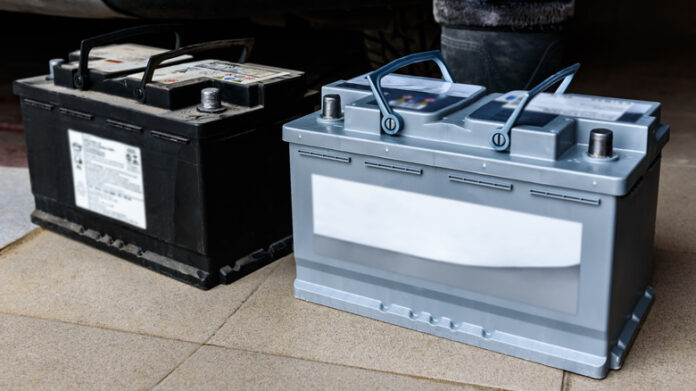Readers of a certain age may recall the knee-jerk reaction of religiously placing a scrap of cardboard or plywood on a garage floor or driveway before setting a car battery down for anything longer than a brief moment. For decades, it was correctly believed that storing a battery on bare concrete would cause it to discharge at a faster-than-normal rate. That’s because in the past, battery cases were constructed out of several different materials, such as hard rubber and even wood, which were vulnerable to moisture.
According to one anecdote, concrete would cause the wooden battery cases of early batteries to warp, which in turn would crack or break the glass cells inside. A move to hard rubber battery cases was a step in the right direction, but the rubber was either porous or frequently contained cracks that allowed moisture from floors like concrete or damp earth to create current between the cells within, causing discharge.
Nowadays, battery cases are universally constructed from tough plastics like polypropylene or polycarbonate, which don’t have cracks or porosity that allow for discharge with direct ground contact. To crib from the popular television show Mythbusters, we’d call that myth busted. There’s no longer a need to elevate batteries off the ground during storage, although other threats remain that can shorten the life of your stored battery.
Temperature and cleanliness are important
To be clear, all vehicle batteries will eventually discharge on their own due to chemical reactions. However, you can keep the discharge rate in check by storing unused batteries in a cool environment. Although some folks believe the opposite, it’s actually heat, not cold, that kills car batteries. For example, a 20 degree Fahrenheit bump in temperature can increase the discharge rate twofold. Your storage area may not be climate controlled, but at the very least, pick a cool corner that’s out of direct sunlight. At the other extreme, freezing temperatures can lead to cracks in the battery’s case, particularly if it isn’t fully charged.
It’s also important to keep the top of the battery, or whichever side the terminals are located, clean. Dirt, dust, and other grime can create an electrical connection between the terminals that will speed up the discharge process. An occasional wipe with a clean cloth is excellent preventative maintenance for your stored battery.
So how long can you safely store a car battery? Recommendations vary by manufacturer and type — for example, lead-acid versus absorbent glass matte (AGM) — but storing them for a few years isn’t out of the question. Of course, you’ll want to top up the voltage periodically with a trickle charger during that time. Perhaps even a solar-powered one.



